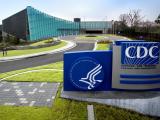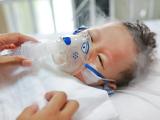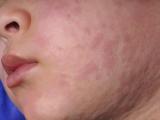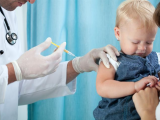Apr 14, 2010
Study says US dengue hospitalizations have risen sharply
Researchers from the University of Iowa estimate that the annual number of US hospitalizations for dengue fever more than tripled over a recent 8-year period, from 81 in 2000 to 299 in 2007, according to a report in Emerging Infectious Diseases (EID). The total number of hospitalizations during that period was estimated at about 1,250, with patients averaging 38 years old and spending a median of 3 days in the hospital. The authors said the increase is not surprising, given that incidence of the disease in dengue-endemic countries has increased in recent years and that many travelers enter the United States from the tropics each year. The authors derived their estimates by looking for dengue fever diagnoses in the National Inpatient Sample, described as the nation's largest all-payer database of hospital discharges. The sample is maintained by the Agency for Healthcare Research and Quality and includes 20% of all discharges from non-federal acute care hospitals. The authors say their findings indicate that the decision to make dengue a nationally notifiable disease in 2010 was warranted.
Apr 13 EID report
Salt Lake County officials link measles case to Europe
Salt Lake County health officials have linked at least one of the area's confirmed measles cases to European travel, Deseret News, based in Salt Lake City, reported yesterday. Since the first of the year several European countries have reported measles outbreaks, and yesterday the World Health Organization (WHO) issued a statement detailing them and urging international travelers to be vaccinated against the disease. Nicholas Rupp, spokesman for the Salt Lake County Department of Health (SLCDH), confirmed the link but did not reveal what country, according to the Deseret News. The SLCDH recently confirmed its first case of measles since 1997. The illness reportedly occurred in a high school student, which led to voluntary isolation of that patient and quarantine of unvaccinated students who may have been exposed to the virus. The Deseret News reported that five other measles cases have been confirmed, and that the initial patient had traveled to Poland.
Apr 13 Deseret News story
In a related development, Northern Ireland today warned families to have their children immunized with the measles, mumps, and rubella (MMR) vaccine before traveling to other countries. Dr Lorraine Doherty, assistant director of public health, said in a statement that Northern Ireland has had few cases, because the country has a high MMR vaccine uptake compared with other European countries, but she warned against complacency.
Apr 14 Northern Ireland Public Health Agency press release
Also, the Minnesota Department of Health (MDH) yesterday confirmed four more measles cases, raising its outbreak total to 17. Most of the cases have links to a young child who got sick with a rash after traveling to Kenya.
Apr 13 MDH update
CDC launches competency guide for biosafety labs
The US Centers for Disease Control and Prevention (CDC) today released competency guidelines for biosafety labs. They appear in a supplemental issue of Morbidity and Mortality Weekly Report (MMWR). Development of the core competencies started in early 2009 with a CDC steering committee that partnered with the Association of Public Health Laboratories to lead the effort. The new guidelines are designed for workers at all levels at the three highest biosafety levels (BSLs): 2, 3, and 4. Topics range from hazard recognition to workspace design. A 27-member expert panel developed the competency guide, which was reviewed by about 300 practitioners. The guideline specifics appear in appendix B of the supplement.
Apr 15 MMWR supplement
Apr 15 MMWR supplement appendix B
CDC report traces polio surveillance progress, setbacks
Almost one fourth of countries affected by wild poliovirus (WPV) in 2009 or 2010 failed to meet surveillance standards, according to a report published today in MMWR. The report, by scientists at the US Centers for Disease Control and Prevention (CDC), is part of the Global Polio Eradication Initiative's efforts since 1988 to track progress toward polio eradication. It said that 77% of countries affected by WPV in the last 2 years met national performance standards for surveillance of acute flaccid paralysis and that 13 of 22 countries with WPV outbreaks had underperforming regions, as did 2 of 4 countries with reestablished WPV transmission. In addition, five of six WHO global regions met targets for timely reporting of poliovirus isolation results in 2009, but only four of six regions met those criteria in 2010. The report also mentions that weekly sewage sampling in Mumbai, India, during 2009 detected "multiple" WPVs closely related to WPVs circulating in several other areas of India, but that testing in 2010 produced only one WPV-positive result. In Pakistan, monthly environmental sampling began in six cities in 2010 and produced 80 positive results among 157 samples tested, including in Karachi and Lahore.
Mar 15 MMWR report
Study: ICU interventions failed to reduce drug-resistant infections
Increased surveillance for bacteria and greater use of gloves and gowns failed to reduce the transmission of two important antibiotic-resistant pathogens in a randomized clinical trial conducted in 18 hospital intensive care units (ICUs), according to a report in today's New England Journal of Medicine. The trial, sponsored primarily by the National Institute of Allergy and Infectious Diseases (NIAID), focused on methicillin-resistant Staphylococcus aureus (MRSA) and vancomycin-resistant enterococcus (VRE). The aim was to determine whether actively screening patients for MRSA and VRE and increasing the use of gloves and gowns, along with hand hygiene, could reduce bacteria transmission compared with existing ICU practices, the NIAID said in a press release. The authors found no significant difference in infection events between the intervention and control groups. Trained monitors found that healthcare personnel in both groups used barrier precautions and proper hand hygiene less often than required, the NIAID reported. The authors concluded that reducing transmission of MRSA and VRE may require a combination of improved compliance with isolation precautions (recommended in some cases) and measures to reduce bacteria on body sites and in the environment.
Apr 13 NIAID news release
Apr 14 NEJM abstract
Introduction to related NEJM editorial

















